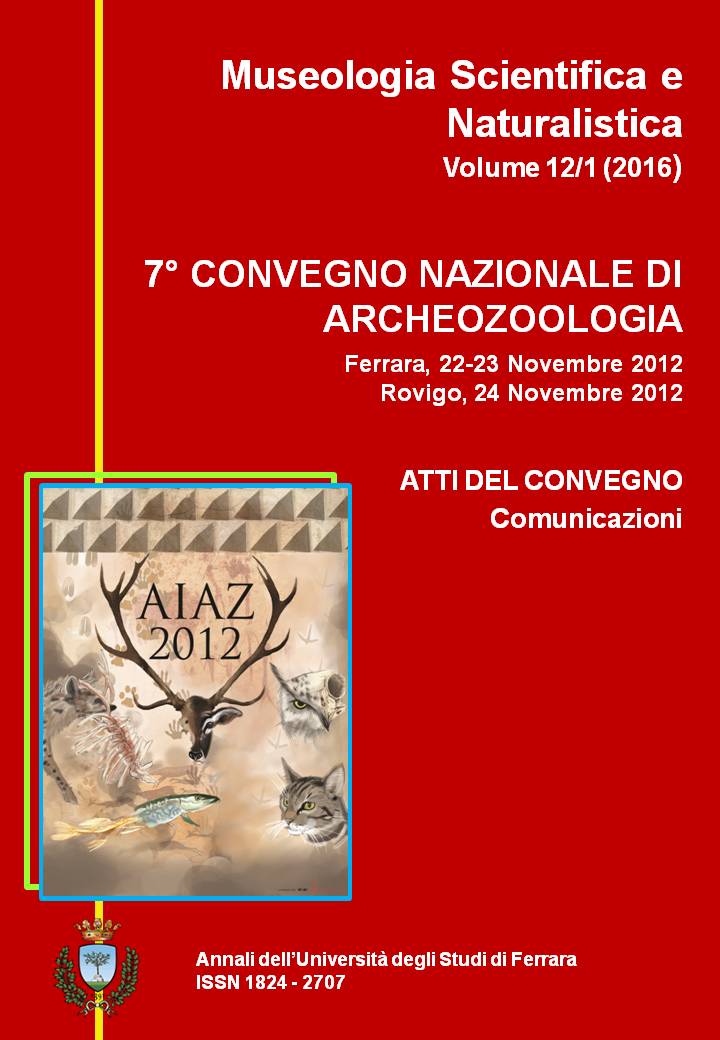Ritoccatori in materia dura animale, confronto tra Musteriano finale (44 ky cal. BP) e Uluzziano (42 ky cal. BP) in Nord Italia: il caso di Grotta di Fumane
DOI:
https://doi.org/10.15160/1824-2707/1313Abstract
Riassunto - I ritoccatori in materie dure animali utilizzati per modificare i margini delle schegge litiche sono oggetto di studio sempre più approfondito e si rivelano molto diffusi, sia geograficamente che cronologicamente. In Italia sono abbondanti in siti e livelli del Musteriano finale ma presenti e utilizzati anche nell’Uluzziano. Al fine di rilevare eventuali differenze culturali nell’utilizzo di tali manufatti, questo lavoro presenta un confronto qualitativo interno alla sequenza stratigrafica della Grotta di Fumane (Verona), dalla quale per le unità in oggetto sono stati individuati più di 150 strumenti nei due diversi tecno-complessi.
Sia a livello tassonomico (soprattutto il cervo) che anatomico (prevalentemente femori e tibie), i ritoccatori presentano un’importante omogeneità. Sono stati identificati quattro tipi di stigmate: impronte puntiformi, lineari, strie e tacche. Queste sono solitamente inscrivibili in aree circoscritte con anche tre zone di utilizzo per una singola diafisi. L’analisi rileva tra i due tecno-complessi grandi similitudini, sovrapposizioni tecniche e alcune divergenze legate principalmente all’intensità e al modo di utilizzo.
Summary - Bone retouchers, a comparison between final Mousterian (44 ky cal. BP) and Uluzzian (42 ky cal. BP) in North Italia, the case of Fumane Cave
Hard osseous retouchers, used for the modification of stone flakes margins, have been ever more accurately studied and it appears they are very diffused, be it geographically or chronogically. In Italy, they are abundant in final Mousterian sites and layers as well as during the Uluzzian period. In order to pinpoint the possible cultural discrepancies in using these artifacts, this study mostly relies on a qualitative stratigraphical comparison within the Fumane Cave (VR) sequence, where over 150 pieces from the aforementioned two different techno-complexes were discovered. The retouchers present an important homogeneity regarding either the faunal spectrum of the species (mostly deer) or the anatomical segments (femurs and tibias) that were preferred. Four kind of stigmata have been identified: punctiform and stretched impressions, strias and notches. They are usually located in small superficies on a long bone diaphysis, which can bear up to three utilisation zones. On a whole, we noticed wide technical similarities, but some differences were noted, such as a discrepancy in the intensity and the utilisation modalities.



